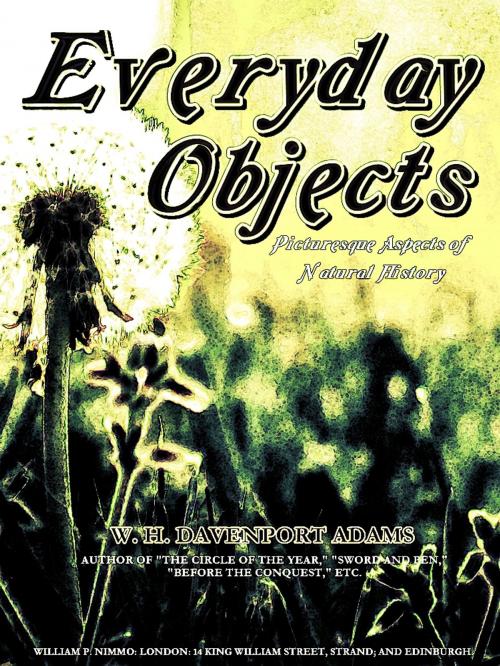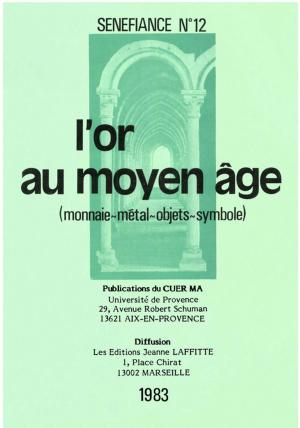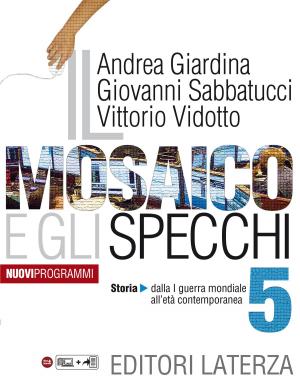Everyday Objects
Picturesque Aspects of Natural History (Illustrations)
Nonfiction, Science & Nature, Nature, Plant Life, Mushrooms, Plants, History| Author: | William Henry Davenport Adams | ISBN: | 1230000305574 |
| Publisher: | WILLIAM P. NIMMO | Publication: | February 24, 2015 |
| Imprint: | Language: | English |
| Author: | William Henry Davenport Adams |
| ISBN: | 1230000305574 |
| Publisher: | WILLIAM P. NIMMO |
| Publication: | February 24, 2015 |
| Imprint: | |
| Language: | English |
Example in this ebook
The very favourable reception accorded both by Press and Public to the "Circle of the Year," has induced me to prepare a second volume, similar in design, but dealing with different branches of the same subject. As the former was founded on the first series of a popular French work, "Les Saisons," by M. Hoefer, so the present has been suggested by the second series; but in availing myself of it, I have omitted much, I have revised more, and at various parts my additions have been considerable. And here, as in my former effort, I have written from a popular rather than a scientific point of view. It has not been my object to sketch the outlines or lay down the foundations of any science; but to show, as best I could, how much of wonder and beauty enters into our daily life, and what inexhaustible sources of study lie at our very feet. It is, perhaps, a misfortune of our common systems of education that they too much neglect the tuition of the eye; that the young are not taught to mark the curious and interesting objects which are comprehended within their daily vision; that they know so much about ancient mythology and so little about modern science,—so much about gods and heroes, so little about stars and flowers.
I have called this volume "Everyday Objects," not because those which it describes may be seen every day, but because they mostly belong to the region of the commonplace and familiar; and I have called it "Picturesque Aspects of Natural History," because I have endeavoured, in companionship with my French collaborateur, to indicate the poetical side of the various sciences into which I have presumed to penetrate. If it should awaken a love of nature in any breast, or develop a spirit of inquiry, which may lead the student further and further on the path of knowledge, the labour bestowed upon these pages will not have been in vain.
The instinct of curiosity,—says M. Hoefer, in his preface to the first series of "Les Saisons,"—is the awakening of the intellectual life: it commences with the lisping of the child, accompanies the adult in every phase of his existence, and, far from becoming extinct with the last throb of the heart, revives before the unknown shadows of the grave. What, then, is there in the whole world of greater importance to follow and direct than the movements and impulses of this curiosity, of these uncertain pulsations of the soul? In this lies the secret of all education; and upon education depends the future of humanity.
Unfortunately, he continues, the methods hitherto employed have been absolutely insufficient. And the insufficiency is most notable as regards the imperfect and defective training given to the instinct of curiosity. Observe the child. Of everything which excites his attention, he never fails to ask you the reason why. It is thus that he enters into the connexion of "cause" and "effect." It is a sign. But instead of following up this natural indication, and developing the thought by the exercise of the reason, we proceed as if the being under our charge were incapable of reason; we overload the memory of the child with a multitude of words, whose value he cannot understand until later in life, and perhaps never. The true direction of the mind is to proceed from the thought to the word, and not from the word to the thought. It is for want of having recognised and applied this principle that our educational systems have failed so utterly.
To be continue in this ebook
Example in this ebook
The very favourable reception accorded both by Press and Public to the "Circle of the Year," has induced me to prepare a second volume, similar in design, but dealing with different branches of the same subject. As the former was founded on the first series of a popular French work, "Les Saisons," by M. Hoefer, so the present has been suggested by the second series; but in availing myself of it, I have omitted much, I have revised more, and at various parts my additions have been considerable. And here, as in my former effort, I have written from a popular rather than a scientific point of view. It has not been my object to sketch the outlines or lay down the foundations of any science; but to show, as best I could, how much of wonder and beauty enters into our daily life, and what inexhaustible sources of study lie at our very feet. It is, perhaps, a misfortune of our common systems of education that they too much neglect the tuition of the eye; that the young are not taught to mark the curious and interesting objects which are comprehended within their daily vision; that they know so much about ancient mythology and so little about modern science,—so much about gods and heroes, so little about stars and flowers.
I have called this volume "Everyday Objects," not because those which it describes may be seen every day, but because they mostly belong to the region of the commonplace and familiar; and I have called it "Picturesque Aspects of Natural History," because I have endeavoured, in companionship with my French collaborateur, to indicate the poetical side of the various sciences into which I have presumed to penetrate. If it should awaken a love of nature in any breast, or develop a spirit of inquiry, which may lead the student further and further on the path of knowledge, the labour bestowed upon these pages will not have been in vain.
The instinct of curiosity,—says M. Hoefer, in his preface to the first series of "Les Saisons,"—is the awakening of the intellectual life: it commences with the lisping of the child, accompanies the adult in every phase of his existence, and, far from becoming extinct with the last throb of the heart, revives before the unknown shadows of the grave. What, then, is there in the whole world of greater importance to follow and direct than the movements and impulses of this curiosity, of these uncertain pulsations of the soul? In this lies the secret of all education; and upon education depends the future of humanity.
Unfortunately, he continues, the methods hitherto employed have been absolutely insufficient. And the insufficiency is most notable as regards the imperfect and defective training given to the instinct of curiosity. Observe the child. Of everything which excites his attention, he never fails to ask you the reason why. It is thus that he enters into the connexion of "cause" and "effect." It is a sign. But instead of following up this natural indication, and developing the thought by the exercise of the reason, we proceed as if the being under our charge were incapable of reason; we overload the memory of the child with a multitude of words, whose value he cannot understand until later in life, and perhaps never. The true direction of the mind is to proceed from the thought to the word, and not from the word to the thought. It is for want of having recognised and applied this principle that our educational systems have failed so utterly.
To be continue in this ebook















